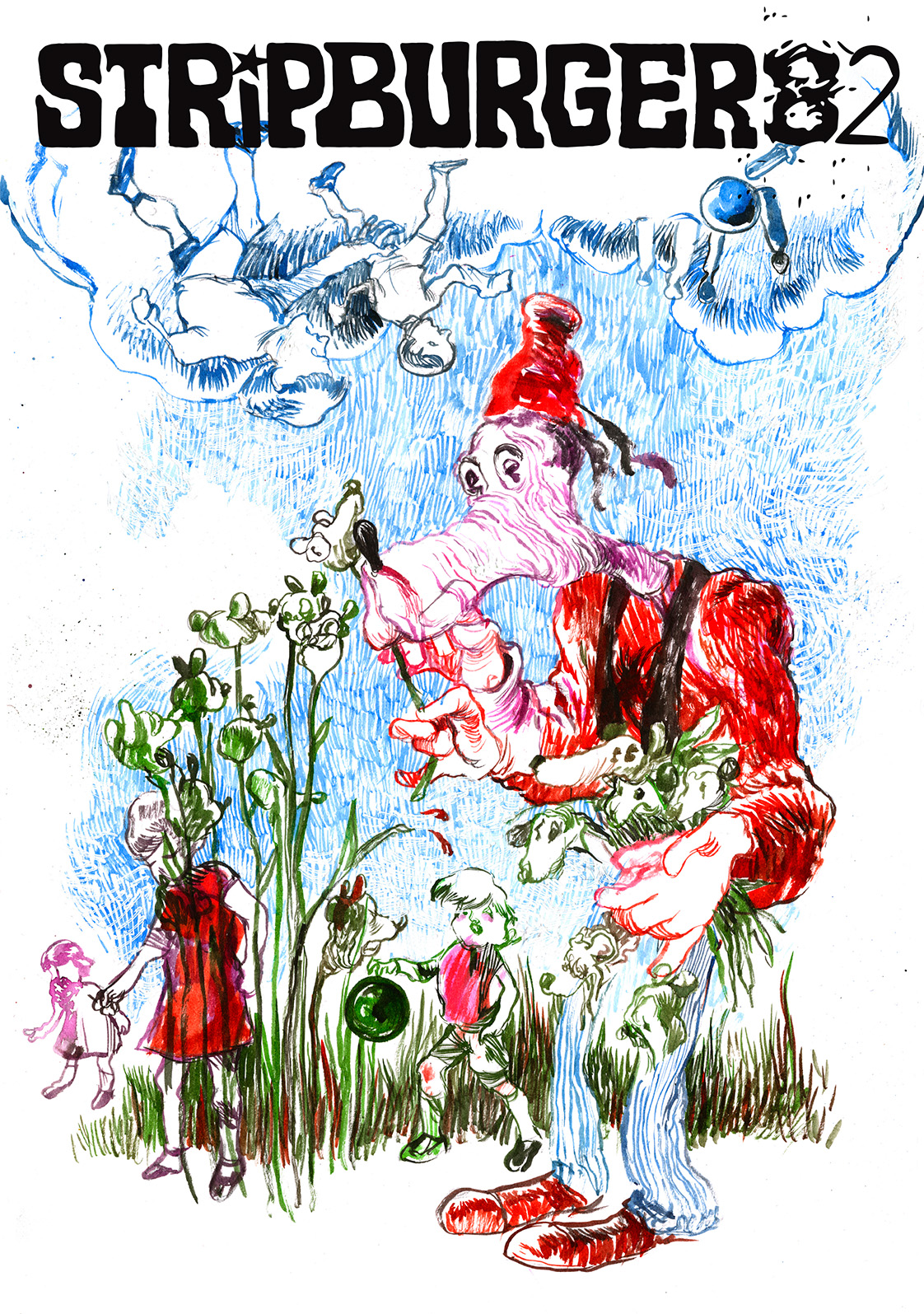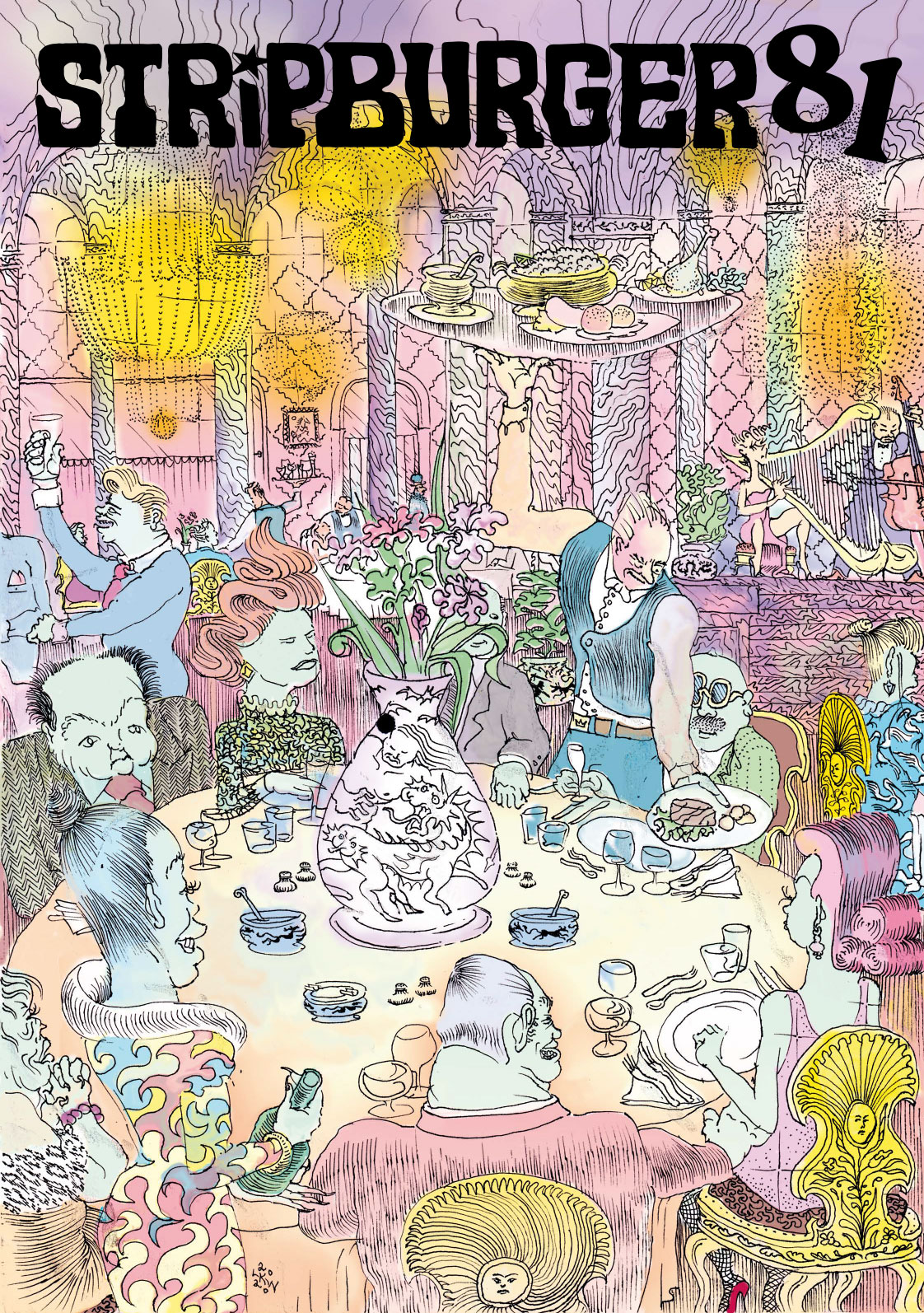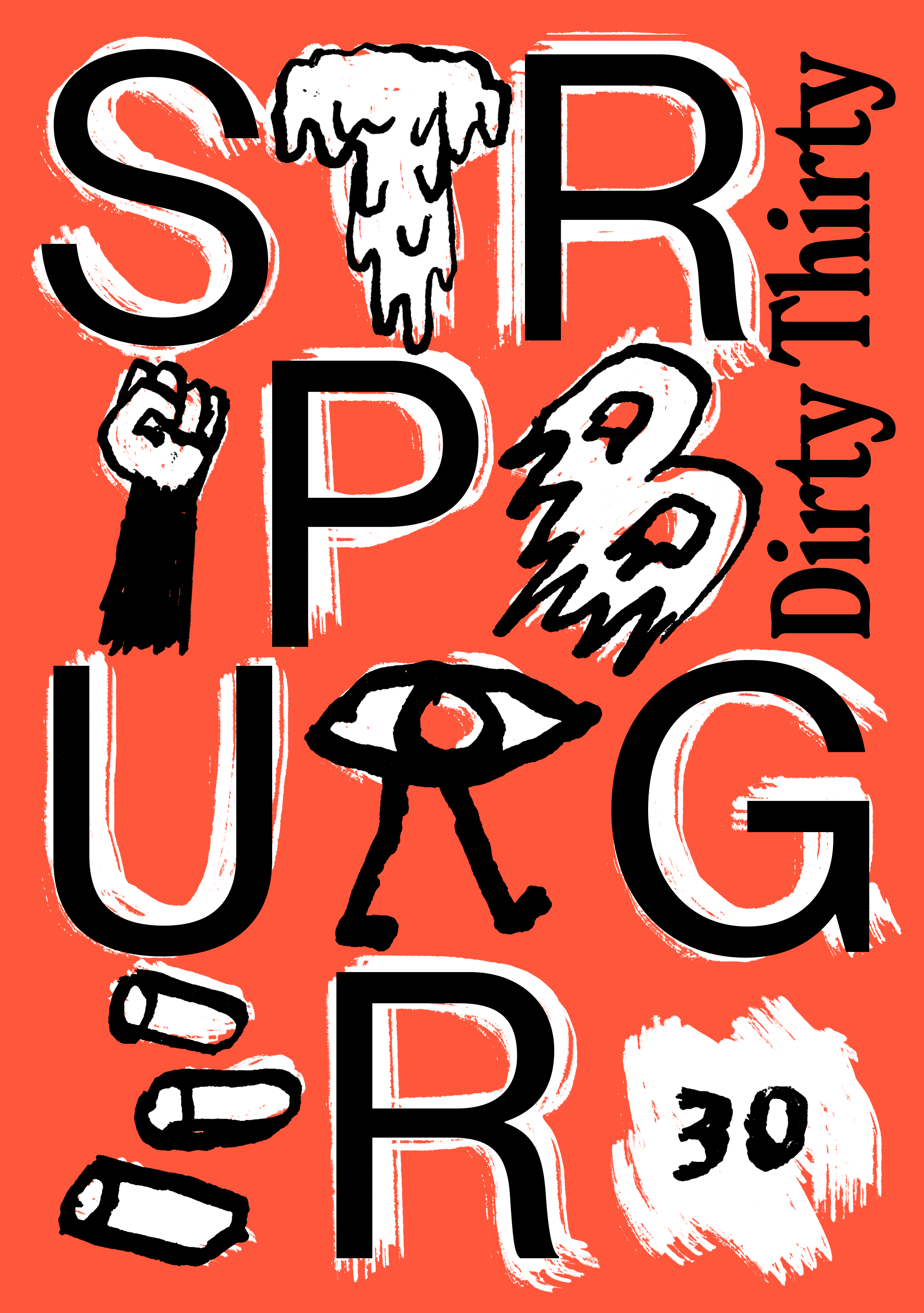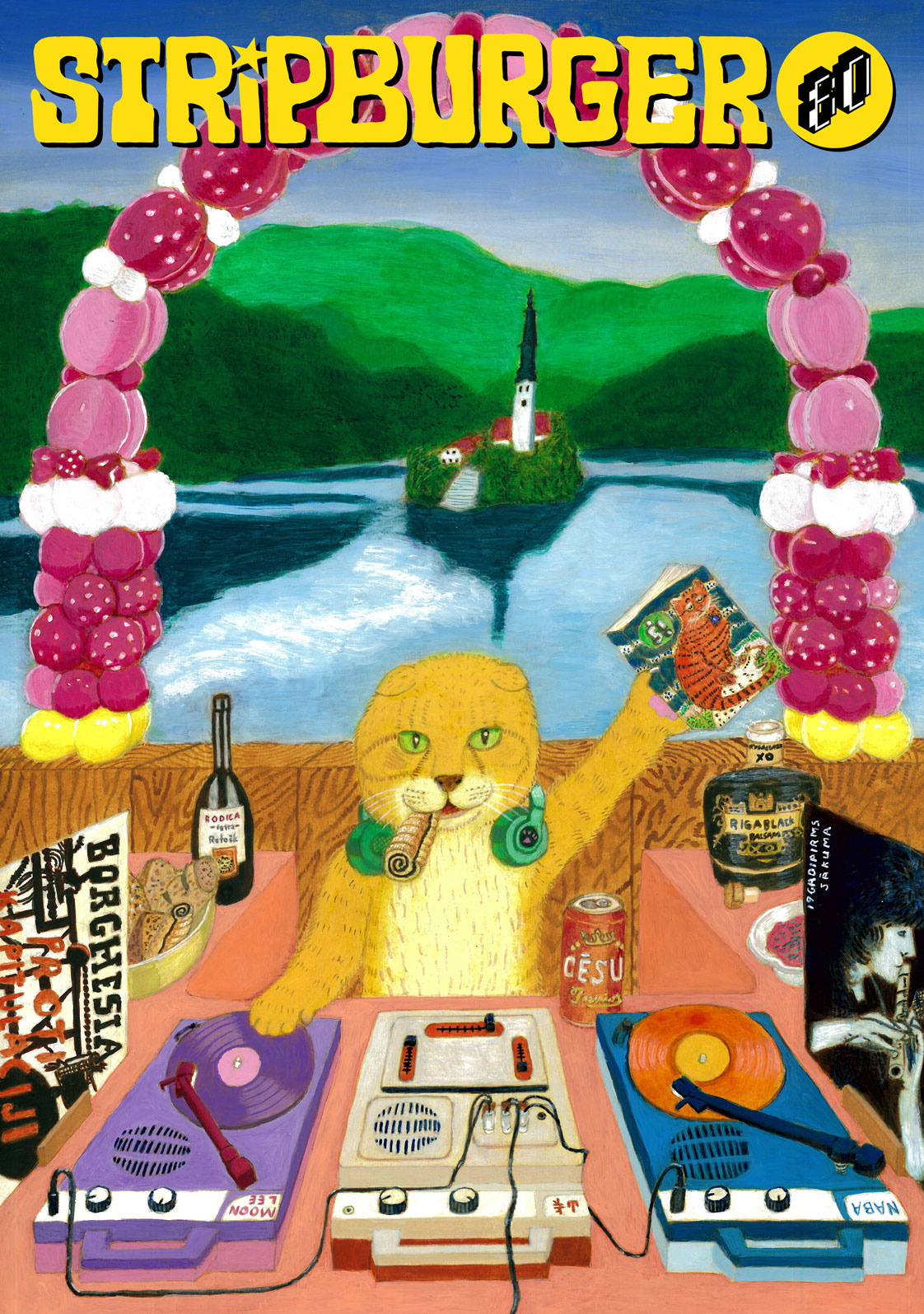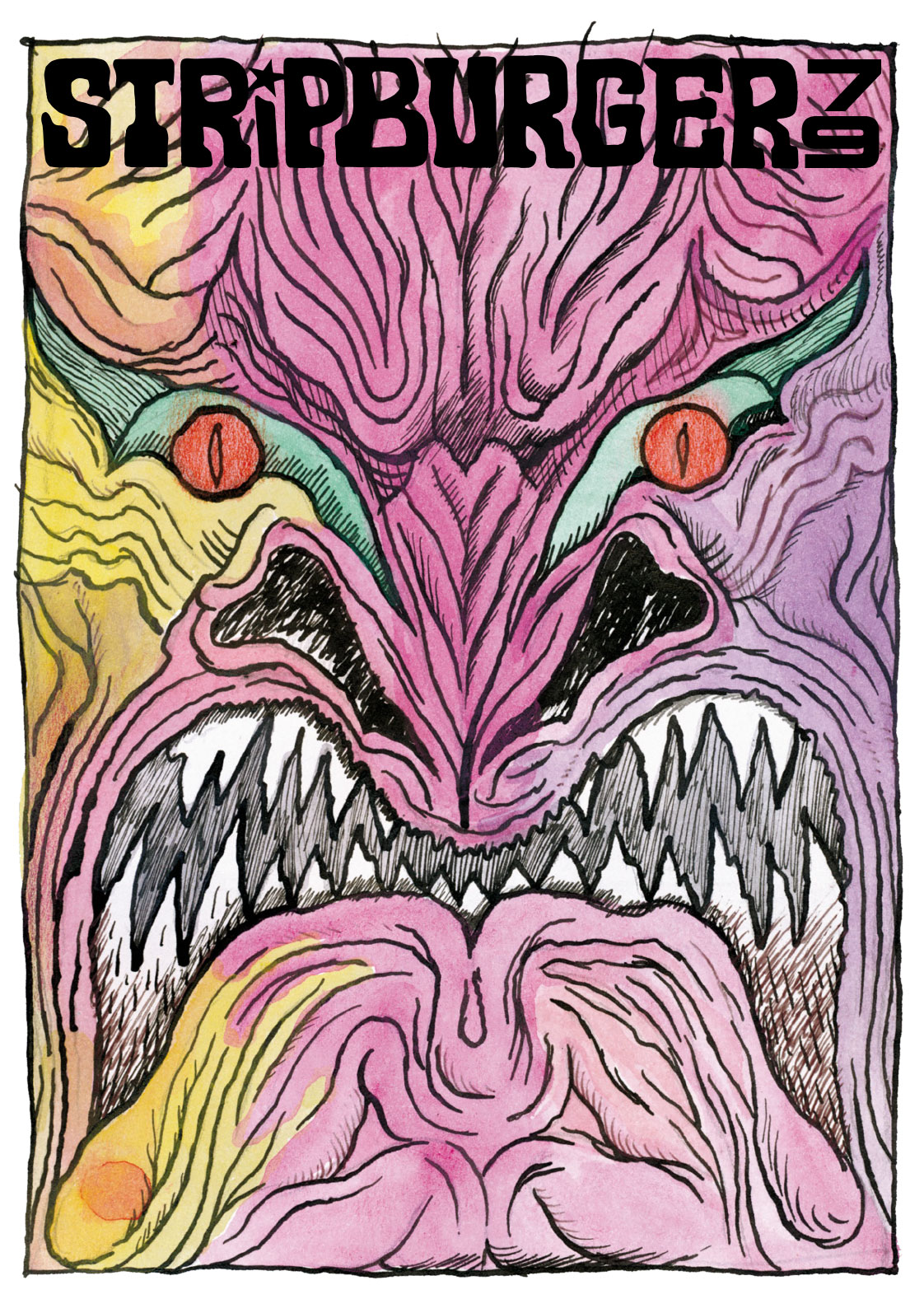Marco Corona was born in 1967 in Carmagnola on the northwest of Italy; his father was a mechanic, his mother a housekeeper. Next to numerous short stories, published in magazines such as Blue, Schizzo, Canicola, andInternazionale, his work comprises a large number of independent book-size editions; among them the somber Bestiario Padano, and In Mezzo, L’Atlantico, in which he recounts his stay in Columbia (now he lives in Rome) as well as a mini series of three shorter booklets I Riflessi, available to the English-bound readers under the title Reflections in an almost simultaneous international series Ignatz. In 2002 he won an award at the Comicon in Neaples, whereas in Perugia he held a drawings exhibition at the Miomao Gallery, one of the three Italian art shop galleries, primarily focused on comic originals. Marco Corona was interviewed by Paola Bristot.
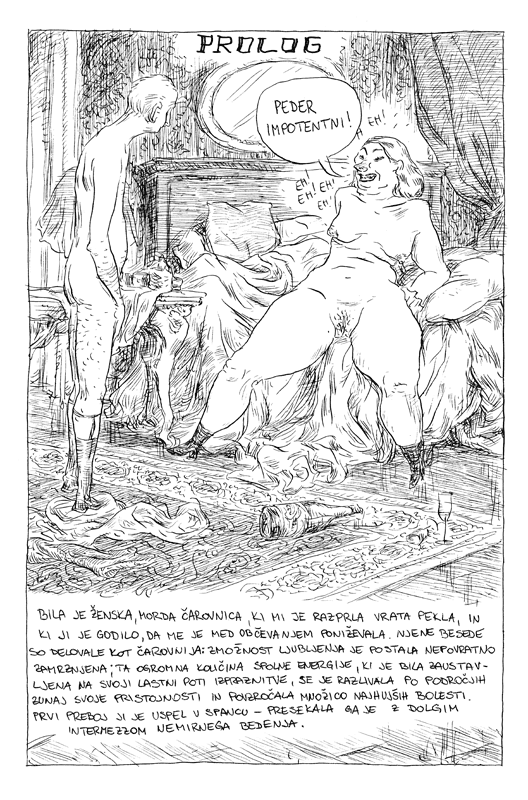
The opening two comic strips to the Le benemerenze di Satana sequel have already been published, the first in Canicola (Canicola #5, autumn 2007), the second in Blue. How did you come across this story, written by Domenico Vaiti?
I found the book at the Emmaus flee market. In it, there is little information about the author; it was published in 1974 by the Marsilio publishing house. The book is in fact a journal, written as a novel, spanning over the author’s entire life. He speaks of his Disease, which had affected him, namely impotence, and how he attempted to cope with it through psychoanalysis, scientific research, artistic creations, but primarily writing.
The nature of the narration is in this case necessarily introspective; it pulls you in. This is anything but a simple approach.
My input is expressed in the visualization, the drawing. I know I haven’t been faithful to the novel, even though I literary use passages from it. I have created a sort of a parallel story, in which I paint and reshape my inner sightings, the astral beings, telepathic messages of the author.
A paradox emerges from the obsessions or repetitions of a particular vision juxtaposed to their buoyancy and dream escapes; you emphasize it in your drawing.
The story will be published in several chapters, the prologue has already been released in Canicola, the following 10 or 15 chapters will see daylight in Blue (the Coniglio publishing house). Each chapter will have a different style. I started the first one with soft brush strokes; in the second, the structure is more laden while the strokes are entangled to a nearly Rococo style; and finally, in the third chapter, which will be published in September, I turned once again to soft strokes. Here, I used the thinnest brush and gave attention to details that weren’t present in the previous two chapters.
Such stylistic diversity is a trademark of all your other works as well, from Frida Kahlo, Bestiario Padano, In mezzo, L’Atlantico to the last, entitled L’ombra di Walt (Coconino Press). Is it research in progress?
It’s a different approach than the one suggested by the story. In this case the styles vary mainly because I’m not sure which one is the closest to Vaiti. Therefore, I’m trying out different ones. Like the main character, who never uses one approach to understand his illness, but rather tries them all, I also decided to give anything a go to get to the core of the novel.
I’ve noticed some similarities between Le benemerenze di Satana and L’ombra di Walt, a parallel, almost expressionistic deformation, especially when depicting female figures. The two stories, both in sequels, deal with a topic, related to an inner vice, and both were published in the same period, which might have enhanced the similarities.
In fact, the stories were conceived in very different periods, but due to given circumstances, I drew them at the same time. To me, they are essentially different. My attempt in L’ombra di Walt was to “display” depression, whereas in Le benemerenze di Satana I tackle an existing text; moreover, a very personal one. In this case, we’re not talking about depression, but rather a pathological form, which is paranoid and obsessive (perhaps these terms are incorrect, I’m not sure …). My approach to the protagonist’s problem was the approach of a complete novice and not that of an expert, I wear the cloak of a topic researcher, and I follow his footsteps, seeking the most appropriate style.
In L’ombra di Walt I tried to tell a story, which on one hand presents events, linked to a particular historical moment. I introduced some repetitive signs, like references to the black market. On the other hand, the hint at the great American economic crisis in the title of the first chapter exists and at the same it doesn’t – or it remains vague. The story unfolds independently by its own mechanisms, suggested by the “maestrina verde”, sitting on my shoulder. I try to arrange them in a comprehensive, readable, visual sense. It speaks of a type of entropic depression, a development inside the characters and things.
With Vaiti it’s different. There is no other perspective than his own; he speaks of his state of negligence and abandonment, his state of the lowest deserted human refuse, condemned to the margin of the society. In the same pitiful way, he describes other characters, with coldness, typical of scientific research.
Could you explain the title of the book?
In part, the main character, namely Vaiti, sees himself as a dark and pitiful creature, the lowest link in human evolution, in whose shade the beauty of the world is revealed. Le benemerenze di Satana (Satan’s Merits) is an oxymoron, the text is in fact a short philosophical treatise, from which we can deduct that in Nature, everything has its purpose; Beauty can be defined and perceived more intensively when juxtaposed with Ugliness.
It seems that Vaiti’s story sets the ultimate boundaries of narration and is at the same time capable of evoking surreal effects that are utterly visionary. You present the protagonist’s approach as detached from mankind, while at the same time your own approach is equally distant from the protagonist; it appears as if you’re observing him through a microscopic lens.
My references to the novel are very loose, because the work itself is very demanding and repetitive in its obsession. I’ve chosen the most appropriate passages, or those that enable me to build a minimal ground based on his claustrophobic writing. On the other hand the characters were already very elaborate, it was enough just to present them. In this sense I only added graphic inserts into his story.
Can you reveal the plot of the story and the ending, if there is one?
It’s all revealed in the Prologue. The author starts with the first slip, followed by others, assembled in a long story line in the form of a journal. As he ages, his sexual impulses diminish, so there is no getting better, he is extinguishing. The sexual desire is trapped and so it manifests itself in other areas. This involves urgent temporary solutions, which are in fact imprudent responses to his disturbances. His writing is almost mechanical, automatic in a way that allows for a leak of his phantasms. The form of the novel is the result of a revision, a search for final meaning that Vaiti seeks not only in his works but also in his life. A search for meaning that doesn’t exist, but is worth the incessant effort.
How will L’ombra di Walt continue?
I have the material for the second sequel; the first part is a sort of an introduction. The sequel will be a set of short stories.
I was impressed by human characters and the masks, reminiscent of legends and mythology.
The choice in masks and the study of physiognomy of the character has a specific narrative function that is not accidental, but I’d rather not speak about that. The same applies to the references to Disney characters. They were created as a counterpart to the great American economic crisis; they have completely lost their original features (in their appearance as well as their behavior) and are condemned to a life in this world, lost forever and irrevocably introverted.
So, you used a Brecht masking technique.
It’s the characters with masks or those that have become masks themselves that struggle along through the crisis. They live in a typical state of a man without a future, who is condemned to a life with his head turned backwards: the twofaced Janus, blindfolded in the front, with his back side forced to look back to the past. No hints or curiosities that drive you forward are allowed. The characters function without the knowledge of the higher purpose and reason, like we all do in fact.Past can be reassessed or relived, that’s true, but such consciousness is false, deceptive and cannot be altered – the past reveals to be a sort of an artificial limb. Decline reigns over everything, so restoration is inconceivable. Even I have to work the story in a state of complete ease, because nothing develops. There is only an idea, a borrowed one; the characters know there has been a time in which certain things took place, some of them perhaps even good. The present is tied to a random form of survival. Period. The power of such a story rests on the unsaid. That’s why I wish to stop at this point.
Is this crisis “genuine”?
Life itself is not subjected to crisis, I don’t think animals have such experience; humans are the ones who are burdened with this pest. Nature predominates, for it can follow its current even without mankind. Nature exists beyond consciousness, whereas humans are oppressed by it. Mythological characters are the closest image of nature; in cities, typically human environments, they change into carnival masks, a grotesque representation of a representation.
Bibliography:
Cadavre Exquis, Centro Fumetto Andrea Pazienza, 1998;
Frida Kahlo. Una biografia surreale, Stampa Alternativa/Nuovi Equilibri,
1998 (ed. Rackham, 2001; ed. Black Velvet, 2006);
32 Coups de toux, Le Dernier Cri, 2001;
Bestiario padano, Coconino Press, 2003 (ed. Rackham, 2002);
In mezzo, l’Atlantico, Coconino Press, 2005;
Riflessi 1-3 (skupaj 96 strani), Coconino Press, 2006-2007 (ed. Coconino
Press-Vertige Graphic, 2006; ed. Fantagraphics, 2006-2007);
L’ ombra di Walt, Vol. 1, La grande depressione, Coconino Press, 2008.

